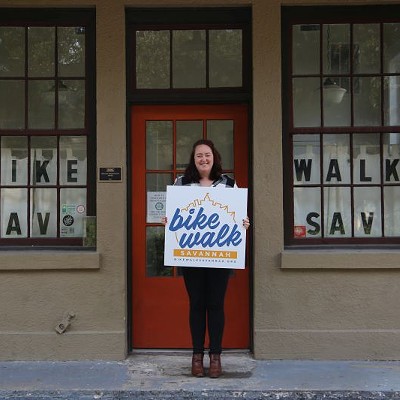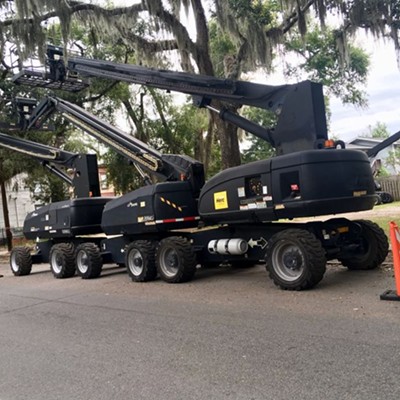WHEN YOU live in the same neighborhood for more than a decade, you become acquainted with its daily rhythms and the comings and goings of its inhabitants.
For instance, a little before 8 a.m. on weekdays I can expect a woman to race down my street in her SUV at what appears to be twice the 25 mph speed limit. I’ve often wished for a radar gun so I could determine if she’s truly going as fast as she seems.
Along with Chatham Crescent’s land speed record holder, I notice the daily passage of vehicles travelling at a slower pace. I’m talking about folks on bikes, including a downtown restaurant employee I often see coasting by my house in the early evenings and a SCAD professor on riding to work from his home in Parkside.
This hasn’t always been the case. When I started commuting by bicycle in 2005, it was a lonely experience. If I spotted a fellow bike commuter I’d not seen before, I felt like a birder adding a new species to his life list.
In 2007 I noted that of the 50 or so employees who worked in the same building as I did, three of us regularly commuted by bike. Not too many years after that, a second bike rack was added to accommodate our growing numbers.
My observations are anecdotal, of course. Can we really be sure bicycle commuting is on the rise in Savannah? Yes, thanks to data drawn from the Census Bureau’s American Community Survey and analyzed by the League of American Bicyclists.
For historical perspective, let’s look back to 2010 when ACS data revealed .9 percent of Savannah residents travelled to work by bike. Savannah’s bicycle mode share had increased to 1.3 percent by 2012, 1.9 percent by 2013 and 2.6 percent by 2014.
That’s right, bicycle commuting doubled between 2012 and 2014 and increased 188 percent in just four years.
If 2.6 percent doesn’t sound like a whole lot of people on bikes to you, consider that the ACS instrument undercounts bicycle commuters, according to the LAB:
“There are at least two limitations to the data: 1) it only measures how someone ‘usually’ gets to work in the ‘last week’ before the question was asked, and 2) it only captures the mode used for the most distance. These limitations mean occasional bike commuters and multimodal commuters who use bikes are unlikely to be captured by ACS data.”
The ACS data also excludes legions of SCAD students who commute to class by bike.
Even if the 2.6 percent number is an underestimation (and it most certainly is), it’s positively stellar compared to the statewide commuting rate, which is only 0.2 percent.
The 2014 data ranks Savannah’s bicycle commuting rate at No. 1 in Georgia, No. 7 in the South and No. 15 of American cities with populations between 100,000-200,000.
What accounts for the significant jump in the number of people who get to work on their bicycles over the last four years? I think the most likely suspect is infrastructure.
In 2010 the unnecessarily wide lanes of Washington Avenue were slimmed by the addition of bike lanes. Two years later, the City hosted a dedication ceremony for the Price Street bike lane.
Both projects calmed car traffic and enabled thousands of people like me to make trips in and out of downtown almost entirely in dedicated bicycle facilities.
We should not dismiss the power of paint, as a growing body of research demonstrates bicycle lanes (and even better, buffered bike lanes) make people safer and more likely to incorporate bicycling in their daily routines.
If the Washington Avenue and Price Street were indeed responsible for more people to riding to their workplaces, perhaps we now have cause for concern, as those were the last two significant bicycle infrastructure projects completed in Savannah.
That’s not to say the City hasn’t done anything positive over the last four years. Continued deployment of bicycle parking and City Council’s passage of a Complete Streets ordinance last year are very good things.
But since we stopped installing bike lanes here, cities across the state and country have significantly expanded their active transportation networks.
Without new infrastructure, could bicycle commuting plateau? Or even decrease? We may find out when analysis of 2015 ACS data is released in October.
Between now and then our city will have several opportunities to make significant quality of life improvements, a number of which will hinge on convincing more residents to go by bike.
In order to make the most of these, we need to get back into the bike infrastructure business. And soon.





























